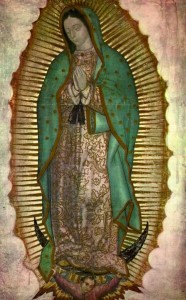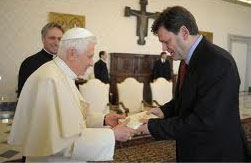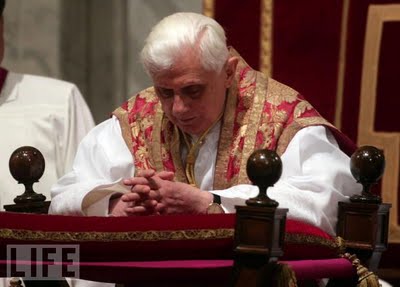January 10, 2011. The Basilica of Our Lady of Guadalupe is the most visited Catholic landmark in the Americas.
Every year more than 20 million people gather in this basilica located on the hill of Tepeyac in Mexico, where the Virgin Mary appeared four times to native-indian saint, Juan Diego in 1531.
During the apparition, the Virgin asked him if he could make a shrine here. The bishop of the area summoned Juan Diego to see if he was indeed telling the truth and asked him to bring roses from the hill where Mary appeared.
Fr. Salvatore Perrella
Vice President, Pontifical Marianum Theological Faculty (Rome)
“The Tepeyac hill is very rocky and it’s very hard to find roses, especially in December. Nevertheless, the farmer Juan Diego found what the bishop had asked of him. He put the roses in his cloak and went to the bishop. He said ‘here is the proof that you need’ and opened his cloak, he discovered that in place of the roses was this beautiful image of the Virgin Mary, who appeared dressed like a native Indian, with native Indian features.”The last vision of the Virgin of Guadalupe was on December 12th, the day the feast is celebrated. It’s a special day for the Americas, especially Mexico, whose patroness is the Lady of Guadalupe.
Fr. Salvatore Perrella
Vice President, Pontifical Marianum Theological Faculty (Rome)
“The Mexican identity owes a lot to Mary, because she made them discover this identity, this unity of the Mexican people.”Perrella, who is an expert of apparitions, says that when the Virgin appears, she normally asks for the construction of a shrine.
Fr. Salvatore Perrella
Vice President, Pontifical Marianum Theological Faculty (Rome)
“It doesn’t necessarily have to be a place of worship in honor of the Virgin. Mary asked the Indian Juan Diego to construct a church to worship the true God. Because of this, the shrine of Guadalupe is not just a Marian shrine, but it is also a sanctuary in which Christ is the center of focus.”In 1990, during the second journey of John Paul II to Mexico, he declared the indian Juan Diego blessed. In 2002, he became a saint.
In all of the Catholic Church’s history, the Vatican has only recognized 15 apparitions of the Virgin Mary. And the Virgin of Guadalupe is one of these.
The Discerning Hearts Blog
IP#59 Dr. Thomas Howard – Narnia and Beyond on Inside the Pages
“Narnia And Beyond: A Guide to the Fiction of C. S. Lewis” by Thomas Howard is fantastic.  Dr. Howard is regarded as one of the leading authorities on the works of C. S. Lewis, and with remarkable clarity he shares with us all the Lewis that has touched the hearts and minds of so many generations, both young and old. It is always a joy to talk with Thomas Howard, but this conversation was particularly enlightening.
Dr. Howard is regarded as one of the leading authorities on the works of C. S. Lewis, and with remarkable clarity he shares with us all the Lewis that has touched the hearts and minds of so many generations, both young and old. It is always a joy to talk with Thomas Howard, but this conversation was particularly enlightening.
Podcast: Play in new window | Download (Duration: 28:00 — 64.1MB) | Embed
Subscribe: Apple Podcasts | Spotify | Amazon Music | Android | Pandora | iHeartRadio | JioSaavn | Podchaser | Gaana | Podcast Index | Email | TuneIn | Deezer | Anghami | RSS | More
You can check out the book at igantius.com
IP#58 Amy Welborn – Light of the World on Inside the Pages
An unprecedented book-length interview given by a Pope, Light of the World by German journalist Peter Seewald, is an absolute must for those who look to our Holy Father for guidance and direction as we  attempt to deepen our relationship with Jesus Christ. I am beyond delighted to have Amy Welborn with us to discuss this important conversation Pope Benedict XVI is actually having with us all. Amy, the author of numerous books, has written extensively on the teachings of Pope Benedict; I couldn’t have anyone better to go “Inside the Pages” of this work that tackles some the greatest issues facing the world today.
attempt to deepen our relationship with Jesus Christ. I am beyond delighted to have Amy Welborn with us to discuss this important conversation Pope Benedict XVI is actually having with us all. Amy, the author of numerous books, has written extensively on the teachings of Pope Benedict; I couldn’t have anyone better to go “Inside the Pages” of this work that tackles some the greatest issues facing the world today.
Podcast: Play in new window | Download (Duration: 31:59 — 29.3MB) | Embed
Subscribe: Apple Podcasts | Spotify | Amazon Music | Android | Pandora | iHeartRadio | JioSaavn | Podchaser | Gaana | Podcast Index | Email | TuneIn | Deezer | Anghami | RSS | More
Check out Amy Welborn’s blog “Charlotte was Both“
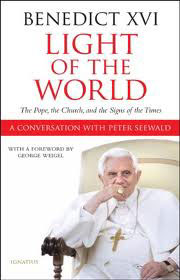 You can find our more at igantius.com the website for Ignatius Press
You can find our more at igantius.com the website for Ignatius Press
IP#57 Dr. Scott Hahn – Verbum Domini part 2 on Inside the Pages
Going deep into the heart of the Word has never taken on more meaning than when discussing Pope Benedict XVI Apostolic Exhortation “Verbum Domini” (The Word of the Lord). Since the Holy Father is rather busy at this time, the next best person to discuss it with would be Dr. Scott Hahn. Though he too is extraordinarily active, Dr. Hahn took time to to break open this extraordinarily important and beautiful gift for us.
it with would be Dr. Scott Hahn. Though he too is extraordinarily active, Dr. Hahn took time to to break open this extraordinarily important and beautiful gift for us.
Podcast: Play in new window | Download (Duration: 28:16 — 25.9MB) | Embed
Subscribe: Apple Podcasts | Spotify | Amazon Music | Android | Pandora | iHeartRadio | JioSaavn | Podchaser | Gaana | Podcast Index | Email | TuneIn | Deezer | Anghami | RSS | More
Do what the doctor (Dr. Hahn, of course) has ordered, go to Vatican.va to read and download “Verbum Domini”
Be sure to visit The S t. Paul Center of Biblical Theology to sign up for free online studies and to learn more “from the heart of the Church”.
t. Paul Center of Biblical Theology to sign up for free online studies and to learn more “from the heart of the Church”.
St. Francis Xavier…for the love of neighbor – Discerning Hearts
In my book, every missionary is great. It takes a great amount of courage and zeal, along with a great deal of faith, hope, and love, to proclaim Christ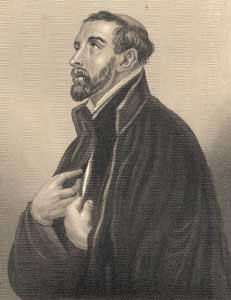 crucified to the world no matter what age you live in, no matter where you travel…whether next door or to a far away land. One of those who has inspired so many is St. Francis Xavier. Omar Gutierrez does another fine job bringing this saint’s witness deeper into our hearts….
crucified to the world no matter what age you live in, no matter where you travel…whether next door or to a far away land. One of those who has inspired so many is St. Francis Xavier. Omar Gutierrez does another fine job bringing this saint’s witness deeper into our hearts….
For the Love of Neighbor…
by Omar F. A. Gutierrez  Along a rather busy street in Rome, as one walks along with various-colored motorini passing by in the typical Italian nonchalance, there stands a rather impressive façade of a Church. Churches in Rome are not rarities. Edifices of worship, shrines and even bits of images of the Blessed Virgin dot the city’s corners and crevices throughout. Here, though, with buildings rising tightly upward, is a church with a piazza that stands resolute. The Church is named after Jesus and is referred to by the Italian Gesù.
Along a rather busy street in Rome, as one walks along with various-colored motorini passing by in the typical Italian nonchalance, there stands a rather impressive façade of a Church. Churches in Rome are not rarities. Edifices of worship, shrines and even bits of images of the Blessed Virgin dot the city’s corners and crevices throughout. Here, though, with buildings rising tightly upward, is a church with a piazza that stands resolute. The Church is named after Jesus and is referred to by the Italian Gesù.
Inside the Gesù, amidst the distracting busyness of the Baroque interior, one will find the remains of St. Ignatius of Loyola, the punctilious and perceptive Spaniard who founded the order known as the Society of Jesus, the Jesuits. Across the nave, though, is an oddly obvious glass display case gilt with gold and silver. Above this floats the golden form of an angel whose wings and flowing robes give a good deal of attention to the case, for inside the case, in that only-too-Catholic fashion, is… a forearm.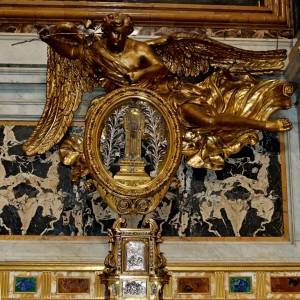
The forearm belonged, or I suppose I should say that it still belongs to another Spaniard who met St. Ignatius at the University of Paris whilst the two of them studied theology. The forearm is on display not in mere virtue of its owner’s friendship with Ignatius. It is on display because its owner, St. Francis Xavier, was one of the most successful missionaries in the history of Christianity. That forearm, black and no doubt by now quite brittle, baptized more souls than perhaps any since the early baptisms of thousands one reads about in the Scriptures.
St. Francis Xavier was born in 1506. When he met St. Ignatius of Loyola, it did not take long for him and five others to join Ignatius in 1534 and be those magnificent seven souls to start the Jesuit order that would transform the world. Nor did it take long, after their order had found some grounding, for St. Francis to be sent by St. Ignatius to go and preach to the world, as Jesus had commanded. St. Francis and his companions, Fr. Paul of Camarino and Francis Mansilhas, sailed from Portugal for India in 1541.
The story of his work in India is dazzling. Certainly Christianity had already been in parts of India, and been there for over a thousand years. However, large swaths of the land were still not evangelized, and anyway the Christians there needed the catechetical and spiritual support of ones like St. Francis, who traveled extensively regardless of danger, time, or geography. What is more astonishing is that the zeal which St. Francis held in that fiery heart of his was not quenched by the successes of India, Ceylon, and the nearby regions. St. Francis heard of a land in which Christianity had never come, Japan, and was compelled to do something about it.
In 1549, he and some companions set out for Japan and landed in Kagoshima. In a year they had 100 converts. Considering this a pittance, Francis pressed onward. At Hirado he was well received and converts came in the droves. His forearm tired at the effort of so many baptisms. Still he pressed on. By the time he left Japan in 1551 at least 2,000 Japanese had been baptized. But there were more lands to be given the Gospel.
I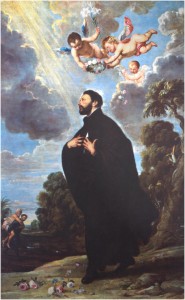 n August of 1552, St. Francis was off again, this time to China. Unfortunately, he fell ill there and died a short time after, on December 3, 1552.
n August of 1552, St. Francis was off again, this time to China. Unfortunately, he fell ill there and died a short time after, on December 3, 1552.
Some of the marks of St. Francis’ story are truly wonderful to relate, not the least of these is the sheer number of baptisms he performed during his eleven years of service in Asia. Modern estimates of his work put him at about 30,000 baptisms. To put that in perspective a bit, that means that St. Francis Xavier would have baptized between 7 and 8 people every day for eleven straight years.
Though he worked to learn the many languages of the lands in which he preached, of course keeping in mind that he would have already known Basque, Spanish, Latin, French, Italian, and Portuguese, he did not have the gift of tongues. The languages he picked up on in India and elsewhere were the result of grueling work on his part. He was not gifted as some are with languages. He had to work hard. This therefore meant that he got creative. He used art a good deal in the attempt to communicate the fundamentals of the faith and as a tool to remember creeds. He also met the people “where they were at,” as the saying goes these days. To the Indians he lived as they did in extreme poverty, eating only rice and water, sleeping on the ground in a hut. In Japan, this would not do. So he dressed richly and presented the local magistrate with fine gifts. This was well received, and he gained instant respect and thus an audience with attentive ears.
Just a couple of last points about St. Francis: first, his travels throughout the world included missionary work not just for the unbaptized but almost especially to already baptized Catholics. Imagine you’ve just sailed the seas for over a year in order to do work in a land far stranger to you than any you’ve ever visited. Upon arriving you discover that the port town is largely Christian. But then you witness what Fr. Butler will describe as the “ambition, avarice, usury, and debauchery” of the Christians there.
The sacraments were neglected, there were not four preachers and no priests outside the walls of Goa; when slaves were atrociously beaten, their masters counted the blows on the beads of their rosaries.
Fr. H. J. Colerdige, S.J. one of the biographers of St. Francis relates the following,
There has probably never yet been a zealous European missionary in any part of the heathen world in which Christians from his own country have been settled, or which they have occasionally visited for purposes of commerce, who has not found among them the worst enemies to his work. No exception can be made as to this lamentable truth in favour of Catholic nations: Spaniards, Frenchmen, Portuguese have as much to answer for in this respect as Dutchmen and Englishmen.
In other words, no Christian missionary has been spared the embarrassment of having to explain to the prospective flock the atrocious behavior of Christians. St. Francis had clearly a lot to do for the Christians already there in Goa. Normally, we…normally I would have thrown in the towel at that point. What is the purpose of preaching the Gospel when the very people who are supposed to be living it are behaving so poorly? Have you not asked yourself thi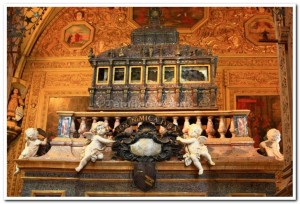 s question?
s question?
The rest of St. Francis Xavier in the Basilica of Bom Gesu in Goa, India
I dare say that we’ve all experienced something like this in our lives. Have we heard the line that the Church is in more danger of corruption from Catholics within than from non-Catholics without? There is something true in that saying I think. Yet St. Francis pressed on. His dedication to Christ Jesus was so deeply ingrained in him, that he did not need to know that all Catholics would behave properly for him to fulfill his vocation. All he needed to do was to listen to God, to press on living for Him.
Lastly, I don’t want to suggest that St. Francis was callously dismissive of the atrocities he found. Of them he wrote that they became “a permanent bruise on my soul.” He allowed the love for Christ to inform his care for his neighbor, over against those of his own faith. He wrote once, when an Indian was abducted for the slave trade,
Would the Portuguese be pleased if one of the Hindus were to take a Portuguese by force and carry him up country? The Indians must have the same feelings.
This ability of St. Francis Xavier to be driven by his compassion for his  neighbor well enough to see beyond the natural affinities of nation, ethnicity, and faith… this ability to defend the rights of these downtrodden strangers, only brings me to wonder how we can be Catholic, today in the U.S., and not desire for ourselves more largeness of heart for the immigrant. Immigration is too large an issue to enter into here, but given the life of St. Francis presented above, how do we really think he would behave in our current time? Would he deny prenatal care to a woman because her proximity is illegal? Would he demand his neighbor produce proof of eligibility before offering them something as simple as shelter from the storm? No, St. Francis Xavier wouldn’t, not the great missionary, not the grand heart, not the forearm that helped to reconcile strangers in his valley of tears to the God of our homeland in the heavens.
neighbor well enough to see beyond the natural affinities of nation, ethnicity, and faith… this ability to defend the rights of these downtrodden strangers, only brings me to wonder how we can be Catholic, today in the U.S., and not desire for ourselves more largeness of heart for the immigrant. Immigration is too large an issue to enter into here, but given the life of St. Francis presented above, how do we really think he would behave in our current time? Would he deny prenatal care to a woman because her proximity is illegal? Would he demand his neighbor produce proof of eligibility before offering them something as simple as shelter from the storm? No, St. Francis Xavier wouldn’t, not the great missionary, not the grand heart, not the forearm that helped to reconcile strangers in his valley of tears to the God of our homeland in the heavens.
Perhaps, then, take time this day of St. Francis Xavier and consider the immigrant in our midst, the stranger in a strange land. If you find your heart hardened by the vituperative rhetoric that so dominates our political culture, then I ask you only to pray to St. Francis the Spaniard, St. Francis the missionary, St. Francis the lover who allowed that love to bring Jesus to the world. Perhaps we might raise a forearm, glass in hand of course, and toast with a friend the same love that saved a wretch like me.
In that spirit: St. Francis Xavier…pray for us!
 Thanks Omar for another great post!!! visit Regnum Novum for more by Omar
Thanks Omar for another great post!!! visit Regnum Novum for more by Omar
Julian of Norwich – “God’s Promises Are Always Greater Than Our Hopes” – Discerning Hearts
“God’s Promises Are Always Greater Than Our Hopes”
VATICAN CITY, DEC. 1, 2010 (vatican.va).- Here is a translation of the address Benedict XVI gave today during the general audience in Paul VI Hall.
Dear Brothers and Sisters,
I still remember with great joy the Apostolic Journey I made in the United Kingdom last September. England is a land that has given birth to a great many distinguished figures who enhanced Church history with their testimony and their teaching. One of them, venerated both in the Catholic Church and in the Anglican Communion, is the mystic Julian of Norwich, of whom I wish to speak this morning.
The — very scant — information on her life in our possession comes mainly from her Revelations of Divine Love in Sixteen Showings, the book in which this kindly and devout woman set down the content of her visions.
It is known that she lived from 1342 until about 1430, turbulent years both for the Church, torn by the schism that followed the Pope’s return to Rome from Avignon, and for the life of the people who were suffering the consequences of a long drawn-out war between the Kingdoms of England and of France. God, however, even in periods of tribulation, does not cease to inspire figures such as Julian of Norwich, to recall people to peace, love and joy.
As Julian herself recounts, in May 1373, most likely on the 13th of that month, she was suddenly stricken with a very serious illness that in three days seemed to be carrying her to the grave. After the priest, who hastened to her bedside, had shown her the Crucified One not only did Julian rapidly recover her health but she received the 16 revelations that she subsequently wrote down and commented on in her book, Revelations of Divine Love.
And it was the Lord himself, 15 years after these extraordinary events, who revealed to
her the meaning of those visions.
“‘Would you learn to see clearly your Lord’s meaning in this thing? Learn it well: Love was his meaning. Who showed it to you? Love…. Why did he show it to you? For Love’…. Thus I was taught that Love was our Lord’s meaning” (Julian of Norwich, Revelations of Divine Love,Chapter 86).
Inspired by divine love, Julian made a radical decision. Like an ancient anchoress, she decided to live in a cell located near the church called after St Julian, in the city of Norwich — in her time an important urban centre not far from London.
She may have taken the name of Julian precisely from that Saint to whom was dedicated the church in whose vicinity she lived for so many years, until her death.
This decision to live as a “recluse”, the term in her day, might surprise or even perplex us. But she was not the only one to make such a choice. In those centuries a considerable number of women opted for this form of life, adopting rules specially drawn up, for them, such as the rule compiled by St Aelred of Rievaulx.
The anchoresses or “recluses”, in their cells, devoted themselves to prayer, meditation and study. In this way they developed a highly refined human and religious sensitivity which earned them the veneration of the people. Men and women of every age and condition in need of advice and comfort, would devoutly seek them. It was not, therefore, an individualistic choice; precisely with this closeness to the Lord, Julian developed the ability to be a counsellor to a great many people and to help those who were going through difficulties in this life.
We also know that Julian too received frequent visitors, as is attested by the autobiography of another fervent Christian of her time, Margery Kempe, who went to Norwich in 1413 to receive advice on her spiritual life. This is why, in her lifetime, Julian was called “Dame Julian”, as is engraved on the funeral monument that contains her remains. She had become a mother to many.
Men and women who withdraw to live in God’s company acquire by making this decision a great sense of compassion for the suffering and weakness of others. As friends of God, they have at their disposal a wisdom that the world — from which they have distanced themselves — does not possess and they amiably share it with those who knock at their door.
I therefore recall with admiration and gratitude the women and men’s cloistered monasteries. Today more than ever they are oases of peace and hope, a precious treasure for the whole Church, especially since they recall the primacy of God and the importance, for the journey of faith, of constant and intense prayer.
It was precisely in the solitude infused with God that Julian of Norwich wrote her Revelations of Divine Love. Two versions have come down to us, one that is shorter, probably the older, and one that is longer. This book contains a message of optimism based on the certainty of being loved by God and of being protected by his Providence.
In this book we read the following wonderful words: “And I saw full surely that ere God made us he loved us; which love was never lacking nor ever shall be. And in this love he has made all his works; and in this love he has made all things profitable to us; and in this love our life is everlasting… in which love we have our beginning. And all this shall we see in God, without end” (Revelations of Divine Love, Chapter 86).
The theme of divine love recurs frequently in the visions of Julian of Norwich who, with a certain daring, did not hesitate to compare them also to motherly love. This is one of the most characteristic messages of her mystical theology.
The tenderness, concern and gentleness of God’s kindness to us are so great that they remind us, pilgrims on earth, of a mother’s love for her children. In fact the biblical prophets also sometimes used this language that calls to mind the tenderness, intensity and totality of God’s love, which is manifested in creation and in the whole history of salvation that is crowned by the Incarnation of the Son.
God, however, always excels all human love, as the Prophet Isaiah says: “Can a woman forget her sucking child, that she should have no compassion on the son of her womb? Even these may forget, yet I will never forget you” (Is 49:15).
Julian of Norwich understood the central message for spiritual life:
God is love and it is only if one opens oneself to this love, totally and with total trust, and lets it become one’s sole guide in life, that all things are transfigured, true peace and true joy found and one is able to radiate it.
I would like to emphasize another point. The Catechism of the Catholic Church cites the words of Julian of Norwich when it explains the viewpoint of the Catholic faith on an argument that never ceases to be a provocation to all believers (cf. nn. 304-313, 314).
If God is supremely good and wise, why do evil and the suffering of innocents exist? And the Saints themselves asked this very question. Illumined by faith, they give an answer that opens our hearts to trust and hope: in the mysterious designs of Providence, God can draw a greater good even from evil, as Julian of Norwich wrote: “Here I was taught by the grace of God that I should steadfastly hold me in the Faith … and that … I should take my stand on and earnestly believe in … that ‘all manner of thing shall be well”’ (The Revelations of Divine Love, Chapter 32).
Yes, dear brothers and sisters, God’s promises are ever greater than our expectations. If we present to God, to his immense love, the purest and deepest desires of our heart, we shall never be disappointed. “And all will be well”, “all manner of things shall be well”: this is the final message that Julian of Norwich transmits to us and that I am also proposing to you today. Many thanks.
Julian of Norwich – “God’s Promises Are Always Greater Than Our Hopes”
“God’s Promises Are Always Greater Than Our Hopes”
VATICAN CITY, DEC. 1, 2010 (vatican.va).- Here is a translation of the address Benedict XVI gave today during the general audience in Paul VI Hall.
Dear Brothers and Sisters,
I still remember with great joy the Apostolic Journey I made in the United Kingdom last September. England is a land that has given birth to a great many distinguished figures who enhanced Church history with their testimony and their teaching. One of them, venerated both in the Catholic Church and in the Anglican Communion, is the mystic Julian of Norwich, of whom I wish to speak this morning.
The — very scant — information on her life in our possession comes mainly from her Revelations of Divine Love in Sixteen Showings, the book in which this kindly and devout woman set down the content of her visions.
It is known that she lived from 1342 until about 1430, turbulent years both for the Church, torn by the schism that followed the Pope’s return to Rome from Avignon, and for the life of the people who were suffering the consequences of a long drawn-out war between the Kingdoms of England and of France. God, however, even in periods of tribulation, does not cease to inspire figures such as Julian of Norwich, to recall people to peace, love and joy.
As Julian herself recounts, in May 1373, most likely on the 13th of that month, she was suddenly stricken with a very serious illness that in three days seemed to be carrying her to the grave. After the priest, who hastened to her bedside, had shown her the Crucified One not only did Julian rapidly recover her health but she received the 16 revelations that she subsequently wrote down and commented on in her book, Revelations of Divine Love.
And it was the Lord himself, 15 years after these extraordinary events, who revealed to
her the meaning of those visions.
“‘Would you learn to see clearly your Lord’s meaning in this thing? Learn it well: Love was his meaning. Who showed it to you? Love…. Why did he show it to you? For Love’…. Thus I was taught that Love was our Lord’s meaning” (Julian of Norwich, Revelations of Divine Love,Chapter 86).
Inspired by divine love, Julian made a radical decision. Like an ancient anchoress, she decided to live in a cell located near the church called after St Julian, in the city of Norwich — in her time an important urban centre not far from London.
She may have taken the name of Julian precisely from that Saint to whom was dedicated the church in whose vicinity she lived for so many years, until her death.
This decision to live as a “recluse”, the term in her day, might surprise or even perplex us. But she was not the only one to make such a choice. In those centuries a considerable number of women opted for this form of life, adopting rules specially drawn up, for them, such as the rule compiled by St Aelred of Rievaulx.
The anchoresses or “recluses”, in their cells, devoted themselves to prayer, meditation and study. In this way they developed a highly refined human and religious sensitivity which earned them the veneration of the people. Men and women of every age and condition in need of advice and comfort, would devoutly seek them. It was not, therefore, an individualistic choice; precisely with this closeness to the Lord, Julian developed the ability to be a counsellor to a great many people and to help those who were going through difficulties in this life.
We also know that Julian too received frequent visitors, as is attested by the autobiography of another fervent Christian of her time, Margery Kempe, who went to Norwich in 1413 to receive advice on her spiritual life. This is why, in her lifetime, Julian was called “Dame Julian”, as is engraved on the funeral monument that contains her remains. She had become a mother to many.
Men and women who withdraw to live in God’s company acquire by making this decision a great sense of compassion for the suffering and weakness of others. As friends of God, they have at their disposal a wisdom that the world — from which they have distanced themselves — does not possess and they amiably share it with those who knock at their door.
I therefore recall with admiration and gratitude the women and men’s cloistered monasteries. Today more than ever they are oases of peace and hope, a precious treasure for the whole Church, especially since they recall the primacy of God and the importance, for the journey of faith, of constant and intense prayer.
It was precisely in the solitude infused with God that Julian of Norwich wrote her Revelations of Divine Love. Two versions have come down to us, one that is shorter, probably the older, and one that is longer. This book contains a message of optimism based on the certainty of being loved by God and of being protected by his Providence.
In this book we read the following wonderful words: “And I saw full surely that ere God made us he loved us; which love was never lacking nor ever shall be. And in this love he has made all his works; and in this love he has made all things profitable to us; and in this love our life is everlasting… in which love we have our beginning. And all this shall we see in God, without end” (Revelations of Divine Love, Chapter 86).
The theme of divine love recurs frequently in the visions of Julian of Norwich who, with a certain daring, did not hesitate to compare them also to motherly love. This is one of the most characteristic messages of her mystical theology.
The tenderness, concern and gentleness of God’s kindness to us are so great that they remind us, pilgrims on earth, of a mother’s love for her children. In fact the biblical prophets also sometimes used this language that calls to mind the tenderness, intensity and totality of God’s love, which is manifested in creation and in the whole history of salvation that is crowned by the Incarnation of the Son.
God, however, always excels all human love, as the Prophet Isaiah says: “Can a woman forget her sucking child, that she should have no compassion on the son of her womb? Even these may forget, yet I will never forget you” (Is 49:15).
Julian of Norwich understood the central message for spiritual life:
God is love and it is only if one opens oneself to this love, totally and with total trust, and lets it become one’s sole guide in life, that all things are transfigured, true peace and true joy found and one is able to radiate it.
I would like to emphasize another point. The Catechism of the Catholic Church cites the words of Julian of Norwich when it explains the viewpoint of the Catholic faith on an argument that never ceases to be a provocation to all believers (cf. nn. 304-313, 314).
If God is supremely good and wise, why do evil and the suffering of innocents exist? And the Saints themselves asked this very question. Illumined by faith, they give an answer that opens our hearts to trust and hope: in the mysterious designs of Providence, God can draw a greater good even from evil, as Julian of Norwich wrote: “Here I was taught by the grace of God that I should steadfastly hold me in the Faith … and that … I should take my stand on and earnestly believe in … that ‘all manner of thing shall be well”’ (The Revelations of Divine Love, Chapter 32).
Yes, dear brothers and sisters, God’s promises are ever greater than our expectations. If we present to God, to his immense love, the purest and deepest desires of our heart, we shall never be disappointed. “And all will be well”, “all manner of things shall be well”: this is the final message that Julian of Norwich transmits to us and that I am also proposing to you today. Many thanks.
Pray for the Holy Father’s Intentions for December – Discerning Hearts
Audio prayer for the Holy Father’s Intentions
DECEMBER
The Experience of Personal Suffering as a Help to Others who Suffer
General: That our personal experience of suffering may be an
occasion for better understanding the situation of unease
and pain which is the lot of many people who are alone, sick
or aged, and stir us all to give them generous help.
Opening Our Doors to Christ
Missionary: That the peoples of the earth may open their doors to Christ
and to His Gospel of peace, brotherhood and justice.
IP#55 Matt Baglio – The Rite on Inside the Pages
“The Rite: The Making of a Modern Day Exorcist” is a fascinating exploration of the rite of exorcism from journalistic point of view. Following the training of a priest from California, Fr. Gary, in Rome, Matt Baglio chronicles his activities, as well as many aspects of the darker sides of the spiritual world. In a very real way, Matt demystifies exorcism and shows us what it really entails and the true gift it is to the Church. “The Rite” is now being made into a major motion
journalistic point of view. Following the training of a priest from California, Fr. Gary, in Rome, Matt Baglio chronicles his activities, as well as many aspects of the darker sides of the spiritual world. In a very real way, Matt demystifies exorcism and shows us what it really entails and the true gift it is to the Church. “The Rite” is now being made into a major motion 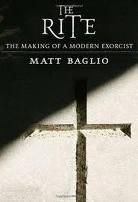 picture starring Anthony Hopkins.
picture starring Anthony Hopkins.
Podcast: Play in new window | Download (Duration: 28:00 — 25.6MB) | Embed
Subscribe: Apple Podcasts | Spotify | Amazon Music | Android | Pandora | iHeartRadio | JioSaavn | Podchaser | Gaana | Podcast Index | Email | TuneIn | Deezer | Anghami | RSS | More
IP#54 Dr. Scott Hahn – Verbum Domini part 1 on Inside the Pages
Going deep into the heart of the Word has never taken on more meaning than when discussing Pope Benedict XVI Apostolic Exhortation “Verbum Domini” (The Word of the Lord). Since the Holy Father is rather busy at this time, the next best person to discuss it with would be Dr. Scott Hahn. Though he too is extraordinarily active, Dr. Hahn took time to to break open this extraordinarily important and beautiful gift for us.
with would be Dr. Scott Hahn. Though he too is extraordinarily active, Dr. Hahn took time to to break open this extraordinarily important and beautiful gift for us.
Podcast: Play in new window | Download (Duration: 29:07 — 26.7MB) | Embed
Subscribe: Apple Podcasts | Spotify | Amazon Music | Android | Pandora | iHeartRadio | JioSaavn | Podchaser | Gaana | Podcast Index | Email | TuneIn | Deezer | Anghami | RSS | More
Do what the doctor (Dr. Hahn, of course) has ordered, go to Vatican.va to read and download “Verbum Domini”
Be sure to visit The S t. Paul Center of Biblical Theology to sign up for free online studies and to learn more “from the heart of the Church”.
t. Paul Center of Biblical Theology to sign up for free online studies and to learn more “from the heart of the Church”.

